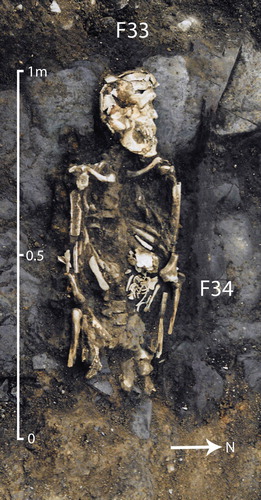Figures & data
Figure 1. Map showing the location of the sites which contained the remains of one or more maternal-infant deaths (prepared by Libby Mulqueeny).
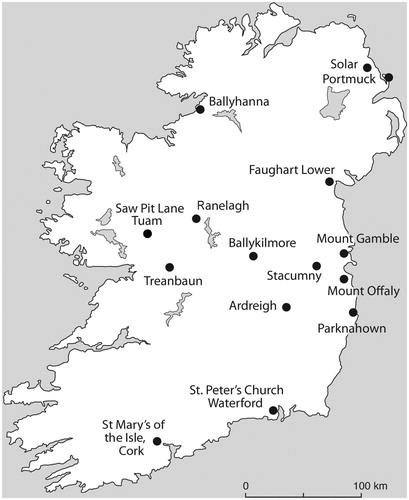
Table 1. Summary details of adult female age-at-death values and numbers of maternal deaths.
Table 2. Summary of the demographic details of the 30 maternal and infant deaths and positions of the babies.
Figure 2. Graph showing the spread of infant death in gestational weeks. In cases where the age-at-death of an individual overlapped two of the age categories to an identical extent, 0.5 was added to both categories.
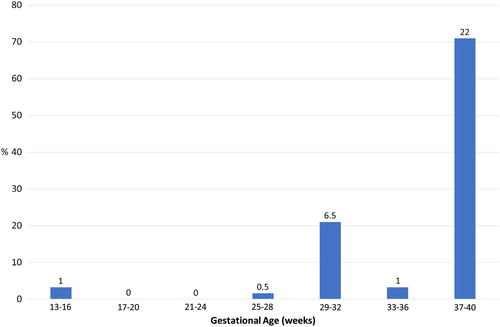
Figure 3. An infant of 38–41 weeks gestation (Skeleton CCLIII) from Mount Gamble, Co. Dublin, lying in cephalic position with the right occiput transverse, in an oblique lie (photograph courtesy of Edmond O’Donovan).
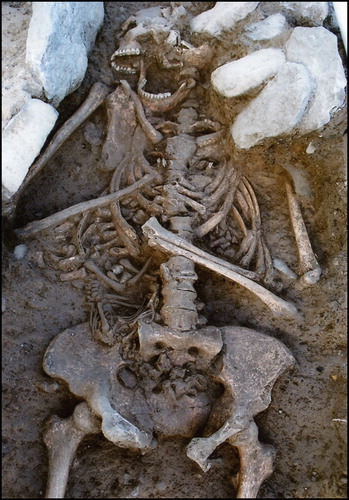
Figure 4. The head of C 957, of 38–40 weeks gestation, from Ballykilmore 6, Co. Westmeath, extruded through the mother’s (C 955) pelvic inlet. It seems feasible that death had occurred when the fetus had been partially delivered and that labour may have been obstructed due to shoulder dystocia (photographs courtesy of John Channing).
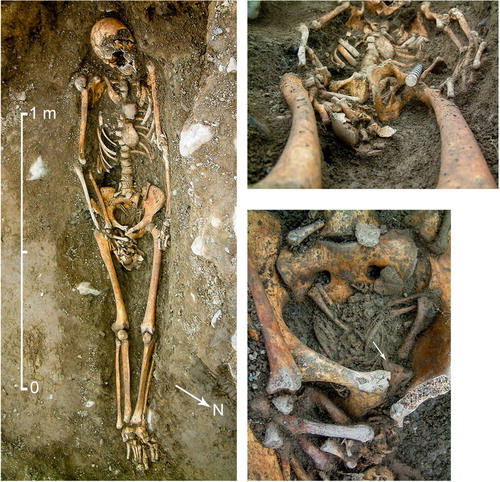
Figure 5. The remains of an infant of 40 weeks gestation (F 34) found associated with a middle-aged male (F 33) at Stacumny, Co. Kildare. The male skeleton displayed bilateral compression and it is possible that he and the infant had been wrapped together inside a single shroud (photograph courtesy of Eoin Halpin).
